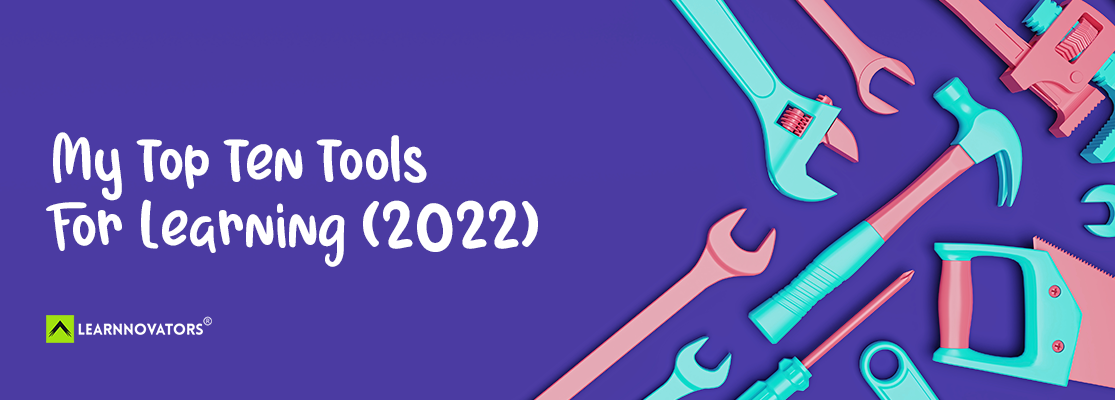The last time I published my top tools was in 2016, in response to Jane Hart’s compilation effort for the “Top 100 Tools for Learning”. Every year since then, I’ve missed the participation boat under some pretext or the other. 2022 was no exception.
As you might be aware, Jane has already published the list for 2022. You can access it here. But if I had voted, here’s what I would have picked.
Ecosia: An alternative to Google, it’s a search engine that plants trees! Without literally doing anything special, I contribute to addressing the climate crisis. How’s that? Climate action notwithstanding, Ecosia also does not automatically track your click-behavior, search history and location like Google does. It allows you to easily choose not to personalize your search results. When I first came across the tool, it sounded too good to be true, so I did some digging around. I was glad to find that it’s absolutely legit.
Google Search: Ecosia is great at generic searches, but for the more specialized ones, you need the network and muscle power of the big guns. For instance, location-based searches, searches that link to some shopping, or booking air tickets or hotels, etc. Both on my laptop and in my mobile device, Ecosia is the default search engine. I switch to Google sometimes based on what I’m searching for and how much personal information I’m willing to share.
Microsoft Word: Invaluable for writing document drafts, I often use a blank / scrap document to jot down my thoughts. Also, a great tool for storyboarding, especially when you know there will be multiple rounds of reviews and edits. Word can track changes really well, and you’ll know who made what changes in the document.
Microsoft PowerPoint: Great for presenting ideas. Again, I look at this as a storyboarding tool. Works very well for presenting complex ideas and interactions. You can also create and save videos in MP4 format (without needing any other tool), but even without such advanced knowledge, the tool is powerful enough for the basic functions I talked about.
Microsoft Excel: The best tool I know for estimation and reporting. All you need to know are a few basic formulae, and Excel can work wonders for you. Side Note: A couple of decades ago, we created a functional quiz using nothing but Microsoft Excel. We were working with a fun client, who wanted to push the boundaries of the tool and see what we can do with it.
These three products from Microsoft have been in my toolbox for as long as I can remember. While Google has dipped into Microsoft’s market share in recent years with their Docs, Slides and Sheets, Microsoft’s creations remain unmatched for me. Especially when it comes to ease of use (read: keyboard shortcuts).
Otter: This is a cool little AI-based app that I discovered recently. Otter records meetings, takes notes in real time, and generates an automated summary to share with others. I mostly use it to record any thoughts or ideas that pop up randomly when I’m on a walk, or out and about in general. It instantaneously generates a transcript, which I then use when I get back to my desk.
ChatGPT: No introduction needed. This one has taken the Internet, and our lives, by storm. While the opportunities are still being explored and new ideas are coming out every day, this tool has ensconced itself firmly in my toolbox. If for nothing else, I always make sure to have my morning coffee chat with ChatGPT to catch up on the previous day. Just kidding.
LinkedIn: Well, LinkedIn is not technically a tool, but what do you call something that you spend time on every day, sharing and learning from your peers? So, a tool it is. I unfollow and hide posts generously so that my feed is filled with content on topics I’m interested in, from people I want to hear from.
Spotify: Again, an unlikely tool. I’ve never been a podcast listener in my life. But late 2022 is when I made the foray into listening to podcasts, with Michelle Ockers’ Learning Uncut. Now my selection of podcasts has expanded considerably, and so now this has become a steady companion on my walks.
Google Translate: Great when you’re working with multi-language content. Even greater when you’re traveling.
So, what are your top tools?
Written by Srividya Kumar, Co-Founder @ Learnnovators






